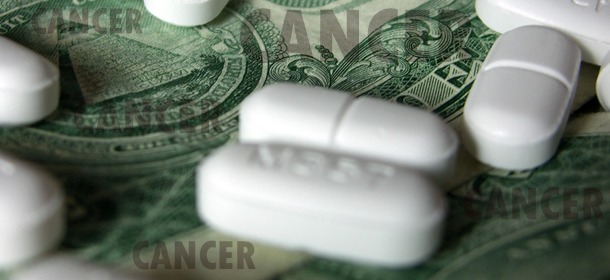Conventional Med
Diclofenac Deaths May Dwarf Vioxx Disaster: Health Agencies Helped It Happen
The world was shocked by the number of deaths caused Vioxx, but that number may be dwarfed by another NSAID, diclofenac. Vioxx was sold only by prescription. Diclofenac is sold both by prescription and over the counter.
The increased risk of heart attack from taking Vioxx is 45%, and the increased risk from diclofenac is 40%. Though the risk from diclofenac is slightly lower, over the counter sales have driven the number of doses taken enormously. Pulse, a publication for general practitioners in the UK, analyzed in January 2010 that the rise in over the counter sales was double the rate of the decrease in GP prescriptions. Therefore, heart attack deaths from diclofenac probably dwarf the Vioxx tragedy.
And our pharmaceutical regulating agencies have turned a blind eye to it, not even providing us with information to let us make rational decisions for ourselves.
This week, the journal PLoS one published “Cardiovascular Risk with Non-Steroidal Anti-Inflammatory Drugs: Systematic Review of Population-Based Controlled Observational Studies,” a metastudy that investigates the relative risk of cardiovascular events with use of several nonsteroidal anti-inflammatory drugs (NSAIDs). All increased the risk of heart disease and the unsurprising leader was rofecoxib (Vioxx). Next came diclofenac. Ibuprofen and naproxen carried the smallest risk. The more a drug was taken, the greater the risk of heart attack.
The Risks
People who took doses under 100 mg/day suffered approximately half the excess risk of heart attacks than those who took over 100 mg/day. Tablets generally come in 25, 50, 75, and 100 milligram doses, and the generally recommended maximum per day is 150 milligrams.
The increase in risk was constant over the pre-existing risk level. That is, if a person whose risk of suffering a heart without taking the drug is 1%, then it would be 1.4% with it. A 50% risk of suffering a heart attack would be increased to 70% by taking diclofenac. So, these results are most signficant to people already at risk of cardiovascular disease. However, a cumulative effect for liver damage has been well noted.
Aside from the risk of heart attack, diclofenac’s other adverse effects are significant, including but far from limited to:
- Gastrointestinal bleeding
- Jaundice
- Weight changes (indicative of metabolic disorder)
- Tremors, depression, abnormal dreams, vertigo, convulsions, meningitis, and other symptoms of neurological harm
- Asthma and other breathing difficulties
- Blurred vision
- Colitis and pancreatitis
- Anaphylactic shock
- Renal (kidney) failure, with a variety of urinary symptoms
- Agranulocytis, aplastic anemia, lymphadenopathy, and other lymph and blood disorders
- Erythema multiforme, toxic epidermal necrolysis, Stevens-Johnson syndrome,and other severe skin disorders
- Liver damage
Clearly, diclofenac is a drug to be taken very seriously. While it may help ease some pain—which only the person living with it can possibly appreciate adequately—the potential for harm is enormous, and it must be balanced against the dangers.
Risk Assessment
The dangers inherent in pharmaceutical drugs have routinely been minimized, and often with disastrous results, as in the case of Vioxx. We may be in the midst of another mass of heart attack deaths from its sister drug, diclofenac, because regulatory agencies failed to take the potential dangers into consideration, not only in their readiness to allow it to be marketed, but also by ignoring indications of serious harm. Diclofenac was approved for over the counter sales after Vioxx was found to be so dangerous.
Regulatory agencies allowed this to happen, and they need to answer for it.
The editors of PLoS have just published Why Drug Safety Should Not Take a Back Seat to Efficacy. They address their concerns for the cavalier manner in which the adverse effects of drugs are ignored. They discuss the difficulties inherent in focusing on the risks, including the fact that each person is different, so that quantifying overall risks is not necessarily meaningful to the individual. They concluded:
However, these challenges should not discourage investigators, regulators, and patients from demanding a higher safety standard for approved drugs. Higher standards will require both greater transparency—in revealing what studies are being conducted and what data that have been generated—and greater willingness of funders to support new studies specifically addressing drug safety.
Obviously, we shouldn’t hold our collective breath for the funders to address safety. After all, they are usually the ones who hope to profit from sales of the drugs. However, we can surely make a point of insisting that all risks be openly acknowledged, and that failure to do so be severely sanctioned, both at the corporate and personal levels. Access to the information should be simple and open to everyone, and if there’s any doubt, then the error must be on the side of caution.
Instead of taking on the role of nanny, deciding what’s best for us—and then enforcing those decisions on us—governmental drug agencies like the FDA should be tasked with assuring that we are provided with full and accurate information. People can make their own decisions about the level of risk they’re willing to take, without being forced to kowtow to intermediaries who present themselves as the arbiters of truth and posture as our protectors. Instead, they’ve acted as pharmaceutical promoters.
There is no excuse for the diclofenac disaster. Our governments did not protect us from it, in spite of all the evidence in front of them. Tens of thousands died from Vioxx. As we’ve seen from British experience, it’s likely that diclofenac deaths are double that number.
It’s past time to strip government pharmaceutical drug agencies of the parental-like and coercive powers they’ve thoroughly abused. Redefine them as overseers of the safety and efficacy of those products, with a mandate to first focus on safety, assure openness of testing, and provide the information openly—leaving it to the people to decide what to do with it. The doctors and agencies have abdicated their duty. It’s hard to believe that we, the people, would do worse.
Brand Names for Diclofenac: Because it’s been out of patent for a long time, diclofenac is sold under a huge number of brand names. Wikipedia has a fairly extensive listing of them here.
Tagged big pharma, conventional medicine, diclofenac death, diclofenac heart attack, diclofenac heart attack death, fda, government drug agencies, nsaid diclofenac, pain patients, pharmaceutical drugs, pharmaceuticals

















Pingback: Over-the-Counter NSAID Kills, But Docs & Regulators Ignore EvidenceGaia Health